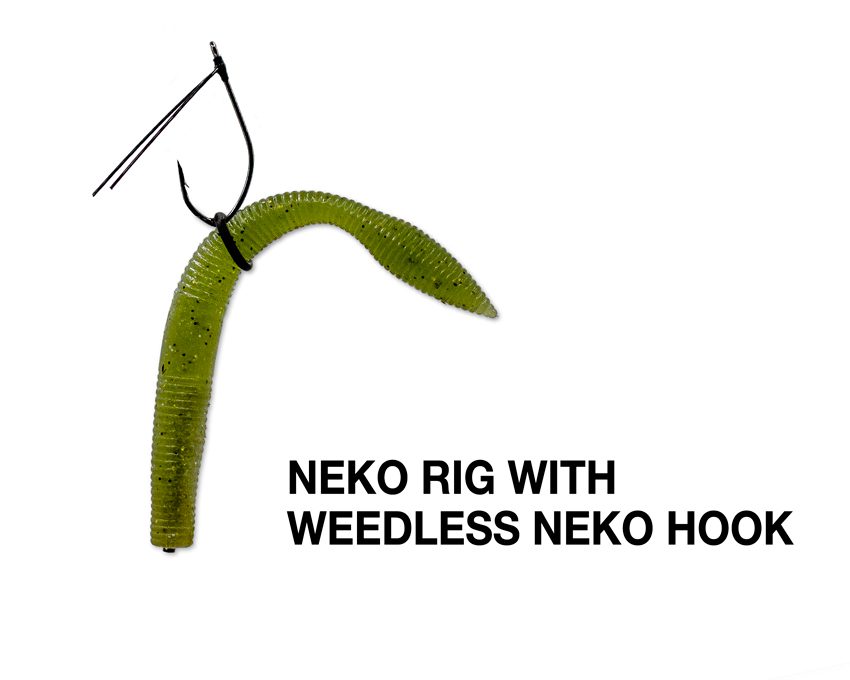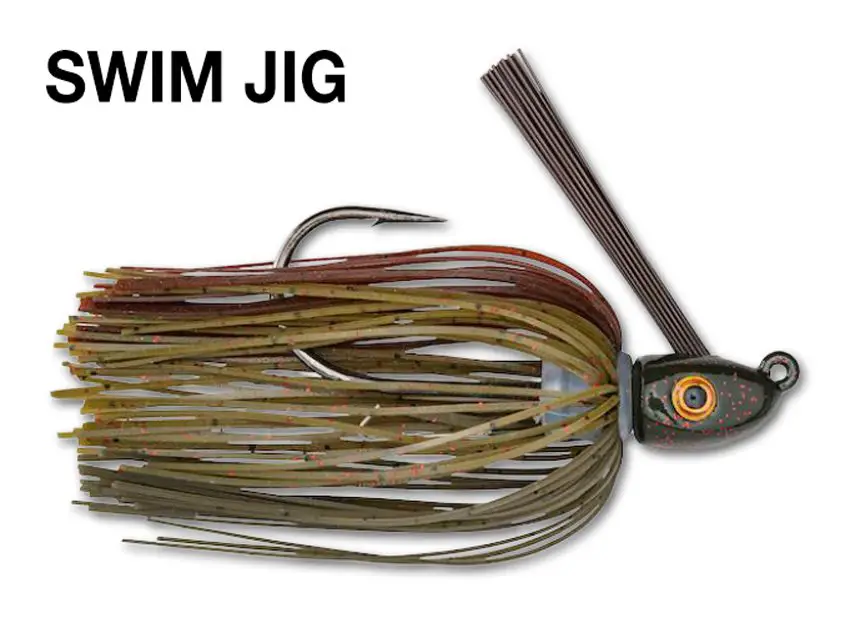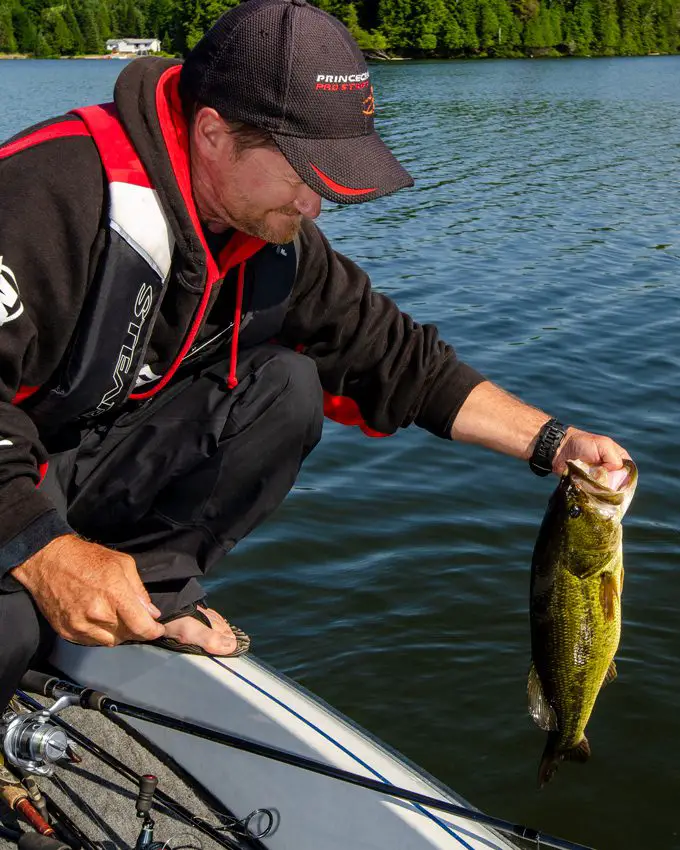4 – THE NEKO RIG
Some people pronounce it like “echo” with the letter n in front of it. Others pronounce it like “nee-ko” as in knee with a ko at the end of it. Both are probably correct. But honestly, I don’t really care.
The Neko rig was derived from the wacky style rigging on a soft stick-worm while looking for something a bit different. It still uses the same bait and an O-ring to hold the hook on, but then things change. Although it may not look too much different from a wacky rig, it acts very differently.
The most significant difference is the addition of a weight into the head of the bait. It’s not a weight on the line nor the hook nor a jig head; it’s a push-in weight that, once slid or stuck into the head of the worm, gives the presentation a whole new look.

Again, I’ve used this rig and caught some Largemouth on it. However, I haven’t used it much. Not nearly enough to give you the thumbs up or down. I will say that once you get a feel for this rigging, though, it’s awesome to watch work.
The idea is to let the bait fall down nose/headfirst and then hit bottom with the butt or tail sitting upwards, of course. You would swear that it looks like something feeding off the bottom of the lake. By imparting a slight shaking action, things really start to look real. I believe this action is the key to its success. I’ve tried it with 4-, 5- and 6-inch stick-worms but found that 4” is best for me so far.
5 – SWIM JIG
Finally, our last bait of the modern era: the Swim Jig. This bait is a derivative of the tried and true Flipping Jig or the Grass Jig. The main difference is in the head style and shape.
I’m not sure how much you have thrown around a Bass jig before, but I do know how much I throw it. A lot! I’ve pretty much always got one tied on unless I’m working on a new technique, which absolutely requires me to leave that jig at home (Otherwise, it’ll be in my hand eventually, and the new technique will have to wait for another day).
I’m probably not going out on much of a limb by saying that the Flipping Jig is my all-time best big Largemouth catcher.
The Swim jig looks almost identical; however, it has some subtle differences. Its head is designed more to pierce the water during a horizontal retrieve. A flipping jig has a flatter head, allowing it to sit nicely on the bottom. Different manufacturers make subtle differences in their Swim Jigs, but, essentially, they’re all made to be cast out and reeled in.
You can use the same trailers as I’ve noted above in the Chatterbait section.
I Learned To Swim A Jig By Sheer Luck
Are anglers lucky or skilled? You tell me. I remember many years ago when I caught my first Largemouth by swimming a jig. I was dunking some weed pockets in around 8 feet of water, and I fired out a cast that I didn’t like, so I quickly—or should I say rapidly—reeled in my black/blue with a chunk jig. About three-quarters of the way back to the boat, a decent Largemouth ripped up from the weedbed and engulfed my jig. I couldn’t believe my eyes. I was tearing that thing back in like you would not believe, not even looking for a fish, just saving time.
Here’s another scenario that happened to me many years ago: It was during the same outing as when I caught that big Largemouth in the feature image of this article. Earlier in the day, I pitched my jig towards a dock but came up short. I started to rip it back faster than fast could be, and a 3+ took a b-line towards my bait. Unfortunately, that fish saw the boat and bolted the opposite way—another addition to my Swim Jig life lessons.
From those moments on, I almost always (when conditions dictate) finish off my Jig pitch or flip by swimming the bait back to the boat. I must assume this has happened to many Bass anglers, and that’s one of the reasons why they came up with the Swim Jig.

I will add here that I like to impart a slight rod-tip action to my swimming jig. It gives it a subtle up and down motion to break up the monotony of a straight retrieve.
CONCLUSION
There you go, you Bass-hungry freaks! A handful of newer techniques to keep the wheels turning in that crazed, fishing-oriented brain of yours.

There’s no way that the tried and true Pop R or Jitterbug, Johnston Silver Minnow, Roland Martin Big Bass Spinnerbait, or Big O crank will be obliterated from our overfilled tackle collections. But maybe, just maybe, there’s room for something a little different.
Enjoy your Bass season, and please keep us posted on your progress.
Pete
